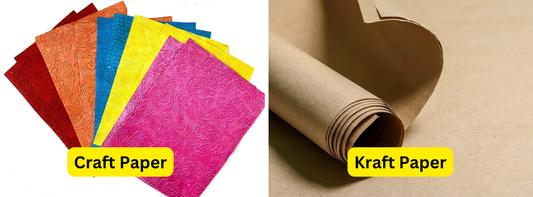Bread bags, a common household item, are increasingly scrutinized for their environmental impact. This article compares paper bread bags vs. cotton bread bags considering factors like sustainability, durability, cost, and functionality. By understanding the characteristics of each, consumers can make informed choices that align with their values and preferences.
- Comparing Paper Bread Bags vs. Plastic Bread Bags: Which Is Better?
- Linen vs. Cotton Bread Bag: Which Is Better?
- Bread Bags vs. Bread Boxes: Which Is Better for Storage Bread?
Paper Bread Bags
Paper bread bags, a traditional and eco-friendly option, offer several benefits for consumers. However, they also have limitations that must be considered. This section will delve into the advantages and disadvantages of paper bread bags, providing insights to help you make an informed decision.
Advantages of Paper Bread Bags
- Environmental Sustainability: Paper bags are a more eco-friendly alternative to plastic bags, as they are biodegradable and compostable. This means they break down naturally over time, reducing their environmental impact.
- Convenience and Portability: Paper bags are lightweight and easy to handle, making them convenient for carrying bread and other small items. Their compact size also allows for easy storage in pantries or kitchen cabinets.
- Affordability: Paper bags are generally more cost-effective than reusable options like cotton or cloth bags, especially for single-use purposes. This is because they are often produced in bulk and sold at lower prices.
Disadvantages of Paper Bread Bags
- Durability Concerns: Paper bags may not be as durable as other materials, such as plastic or reusable fabric bags. They can tear or rip easily, especially when carrying heavy or sharp items. This can lead to spills, messes, and the need for additional packaging.
- Moisture and Oil Sensitivity: Paper bags are not suitable for storing wet or greasy food items. Moisture can cause the paper to become soggy and weak, while oils can stain and spoil the bag. This can lead to food contamination and waste.
- Additional Packaging Needs: For long-term storage, paper bags may require additional packaging, such as plastic bags or containers, to maintain product freshness. This can increase the overall environmental impact and cost of using paper bags.
Overall, paper bread bags offer a convenient and affordable option for short-term storage and single-use purposes. However, their lack of durability and sensitivity to moisture and oil may limit their suitability for certain applications.

Cotton Bread Bags
Cotton bread bags are a reusable option with benefits and drawbacks. This section explores them to help you decide.
Advantages of Cotton Bread Bags
- Reusable and Durable: Cotton bread bags are a sustainable choice as they can be washed and reused multiple times, reducing the need for single-use bags. They are typically made from durable materials that can withstand frequent use and washing.
- Versatility: Cotton bags are suitable for storing a variety of food items, including wet and greasy products. They are also ideal for carrying other items, such as groceries, books, or personal belongings.
- Environmental Impact: While the initial production of cotton bags may have a higher environmental footprint compared to paper bags, their reusability and durability can significantly reduce their overall impact.
Disadvantages of Cotton Bread Bags
- Higher Initial Cost: Cotton bread bags generally have a higher upfront cost compared to disposable paper bags. However, this initial investment can be offset by long-term savings and reduced environmental impact.
- Maintenance Requirements: Cotton bags require regular washing and drying to maintain their cleanliness and hygiene. This can be more time-consuming than simply discarding paper bags.
- Non-Biodegradability: Cotton bags are not biodegradable or compostable, meaning they cannot break down naturally. However, they can be recycled or reused to minimize their environmental impact.
Overall, cotton bread bags offer sustainability and versatility but have higher costs and maintenance needs.

Comparing Paper Bread Bags vs. Cotton Bread Bags
To make an informed choice, consider the environmental impact, cost, and functionality of paper and cotton bread bags. They are explained as below.
Environmental Impact of Paper Bread Bags vs. Cotton Bread Bags
Paper Bread Bags:
- Production: Paper bags generally have a lower environmental impact during production, as they are made from renewable resources like wood pulp. However, the energy and water required for processing and transportation can contribute to greenhouse gas emissions.
- Use and Disposal: While paper bags are biodegradable and compostable, their production and disposal can still contribute to waste and pollution. If not properly recycled or composted, they may end up in landfills.
Cotton Bread Bags:
- Production: The production of cotton bags can have a significant environmental impact, particularly due to the intensive use of pesticides and water. Cotton cultivation can also contribute to soil erosion and deforestation.
- Use and Disposal: Cotton bags are reusable and durable, reducing the need for single-use bags and minimizing waste. However, their production and eventual disposal can still have environmental implications, particularly if they are not recycled or reused properly.
Cost-Effectiveness of Paper Bread Bags vs. Cotton Bread Bags
Paper Bread Bags:
- Initial Cost: Paper bags are generally more affordable than cotton bags, especially in bulk quantities.
- Maintenance and Replacement: Paper bags are disposable, so there are no additional costs for maintenance or replacement. However, the ongoing cost of purchasing paper bags can add up over time.
Cotton Bread Bags:
- Initial Cost: Cotton bags have a higher upfront cost compared to paper bags.
- Maintenance and Replacement: While cotton bags require regular washing and drying, they can be reused multiple times, reducing the need for frequent replacements. Over time, the long-term cost of using cotton bags may be lower than paper bags, especially if they are well-maintained and reused frequently.
Functionality of Paper Bread Bags vs. Cotton Bread Bags
Paper Bread Bags:
- Suitability for Food Items: Paper bags are generally suitable for storing dry bread and other non-perishable food items. However, they may not be ideal for wet or greasy items, as they can become soggy or stained.
- Storage Conditions: Paper bags are best suited for short-term storage and should be kept in a dry place to prevent moisture damage.
Cotton Bread Bags:
- Suitability for Food Items: Cotton bags are versatile and can be used to store a variety of food items, including wet and greasy products. They are also suitable for carrying other items, such as groceries, books, or personal belongings.
- Storage Conditions: Cotton bags can be used for both short-term and long-term storage. They are durable and can withstand various storage conditions.
Overall, both of paper bread bags vs. cotton bread bags have their own advantages and disadvantages. The best choice for you will depend on your specific needs, preferences, and environmental priorities.
Conclusion
Both paper bread bags vs. cotton bread bags have their pros and cons. Paper bags are better for the environment when made, but they might not be recycled well. Cotton bags are reusable but take more energy to make. Paper bags are cheaper to buy, but cotton bags can be more cost-effective in the long run. Paper bags are good for dry bread, while cotton bags can hold different kinds of food. Choose the bag that fits your needs and values best.









